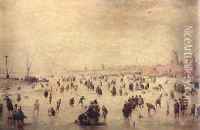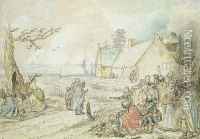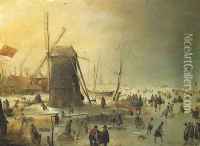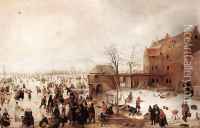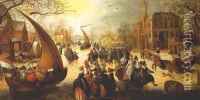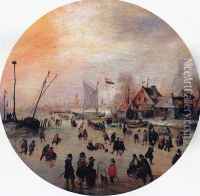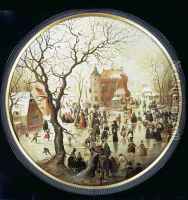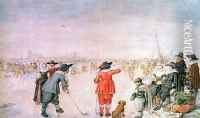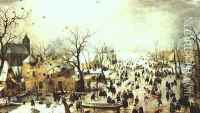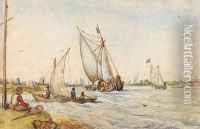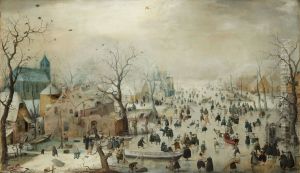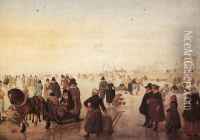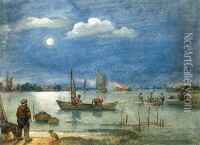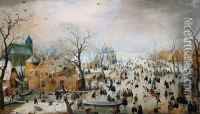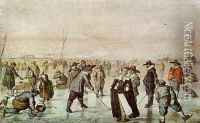Hendrick Avercamp Paintings
Hendrick Avercamp was a Dutch painter born in Amsterdam in 1585. He was a notable figure in the Dutch Golden Age of painting, which was a period in Dutch history during the 17th century when Dutch trade, science, military, and art were among the most acclaimed in the world. Avercamp specialized in painting the Netherlands in winter. His works are characterized by lively and colorful scenes of people ice skating, playing games, and going about their daily activities during the winter months.
Avercamp was believed to be mute and deaf from birth, which led to his nickname 'de Stomme van Kampen' (the mute of Kampen), as he lived and worked for much of his life in the city of Kampen. Despite his disabilities, he studied with the Danish-born landscape painter Pieter Isaacks, and later, possibly with the Flemish artist David Vinckboons, who were both living in Amsterdam at the time.
Avercamp's paintings are typically bustling with activity and are notable for their attention to detail and use of bright colors. His landscapes are filled with scenes of ice-covered canals and rivers, with Dutch citizens engaging in skating, hockey, and kolf—a game similar to golf. Avercamp's work captured the essence of life in the Netherlands during the harsh winters of the Little Ice Age.
His earliest works were painted in Amsterdam, but around 1608, he moved to Kampen. Avercamp's style was influenced by the works of Pieter Bruegel the Elder, which were also known for their detailed and lively folk scenes. Avercamp's technique involved first sketching his compositions, which were often complex and filled with numerous figures. He would then apply color, creating a sense of depth and atmosphere in his paintings.
Avercamp's work was well received during his lifetime, and he achieved a moderate level of fame. He mostly sold his paintings to local art collectors and was never married, living with his mother until her death. After his mother's death, Avercamp continued to live in Kampen, where he passed away in 1634. Today, Avercamp's paintings are held in high esteem and can be found in museums across the Netherlands, including the Rijksmuseum in Amsterdam, as well as in collections around the world. His contributions to Dutch art are celebrated for their unique and vivid portrayal of winter landscapes and activities, offering a window into the everyday life of the Dutch during the Golden Age.
